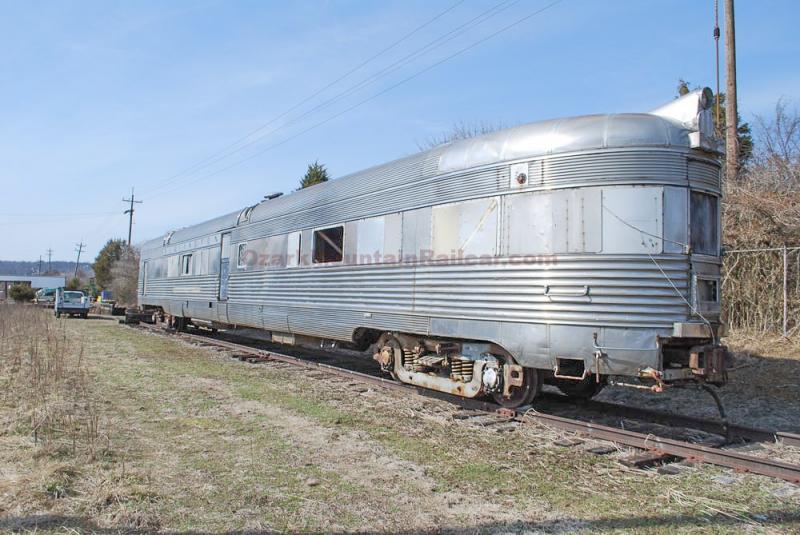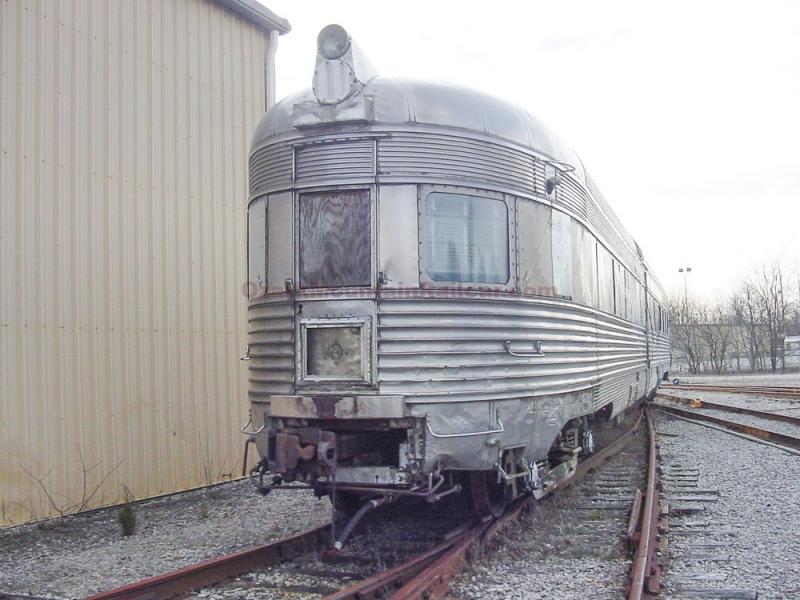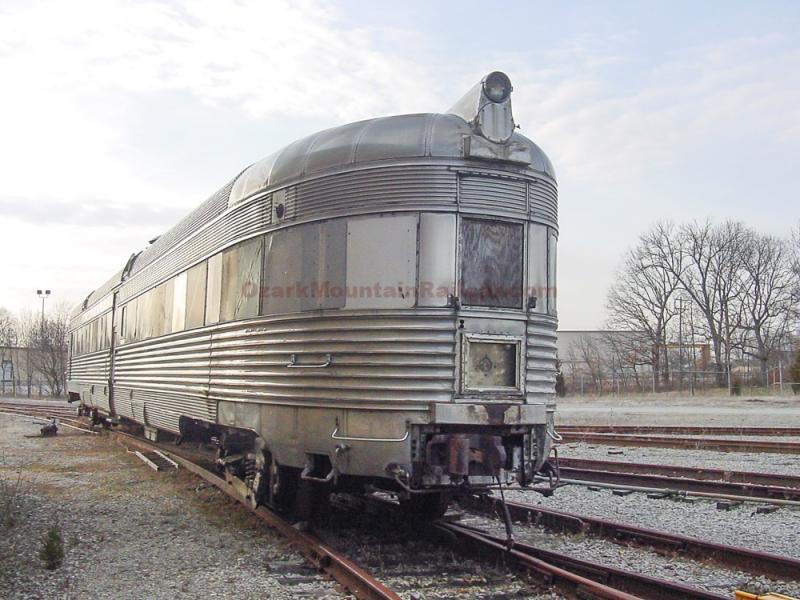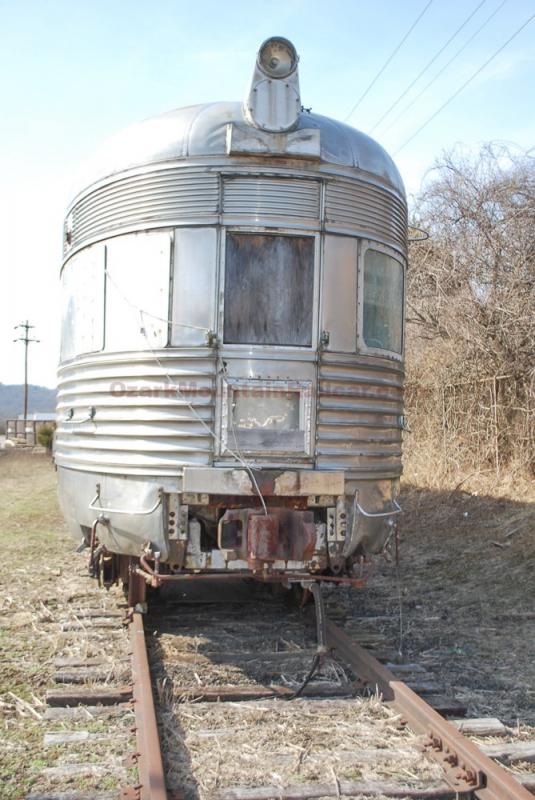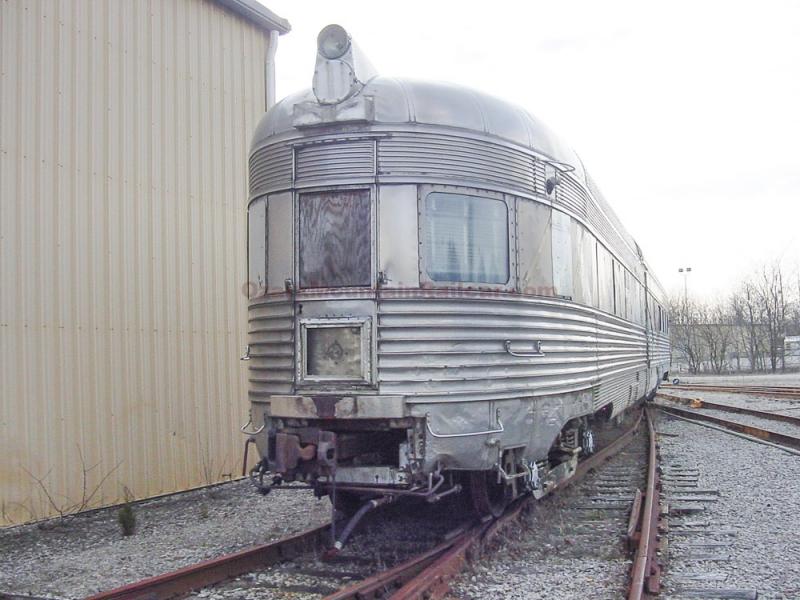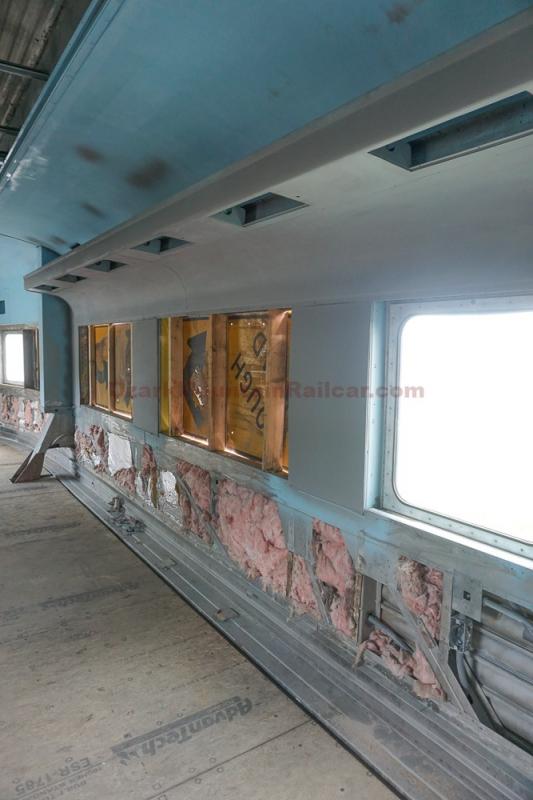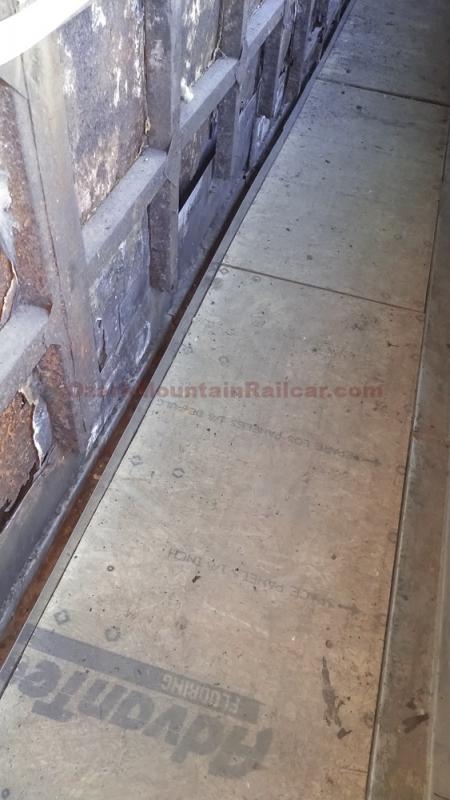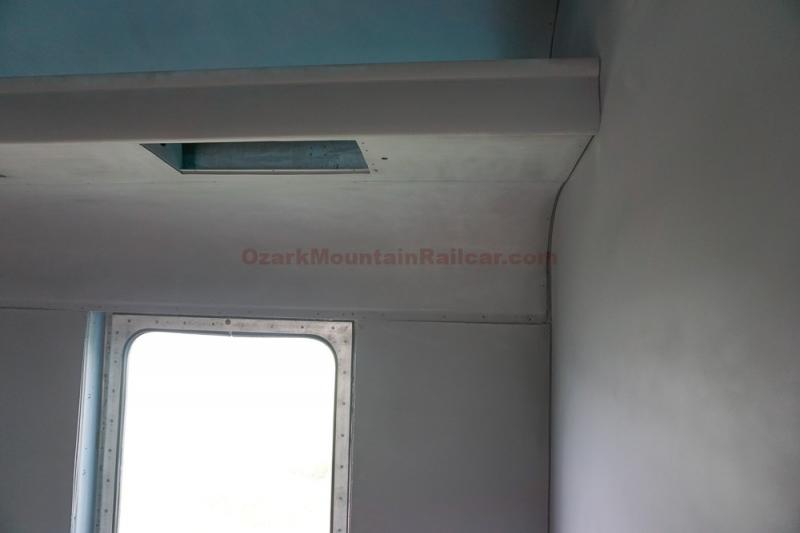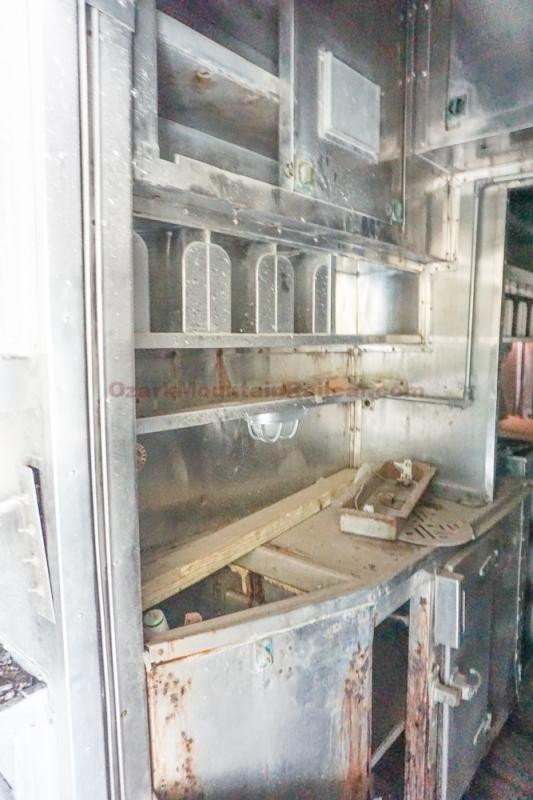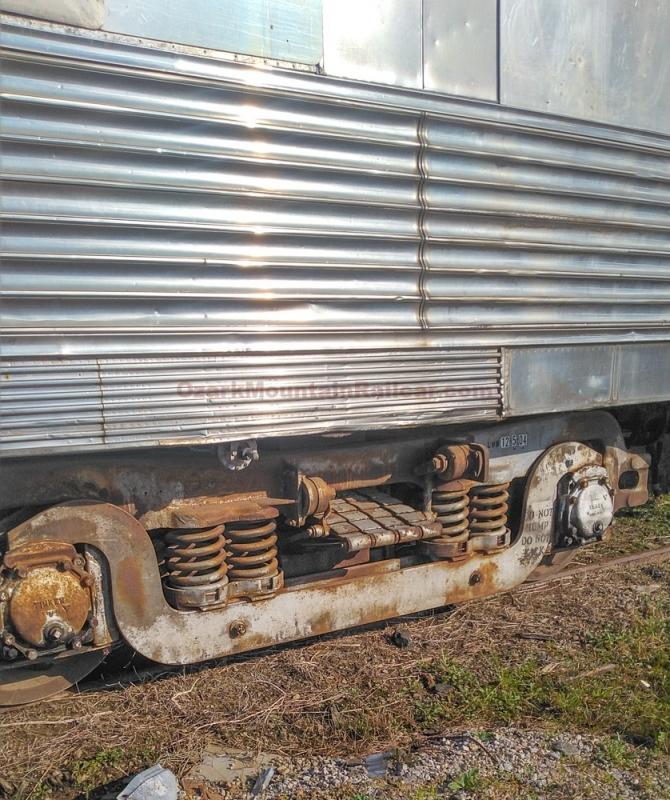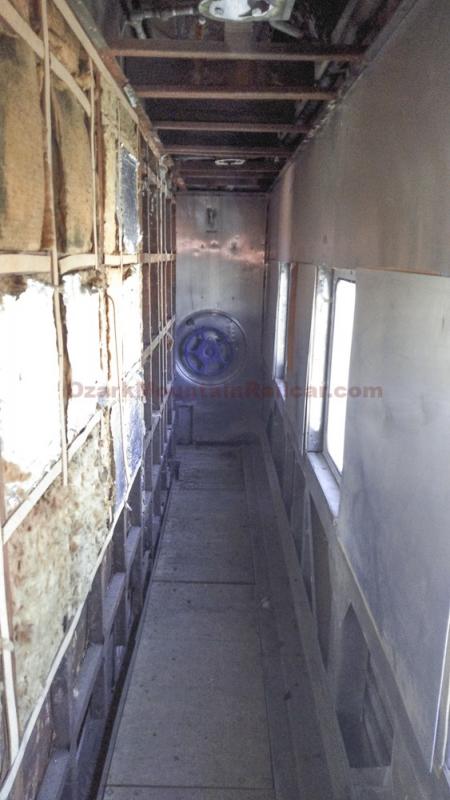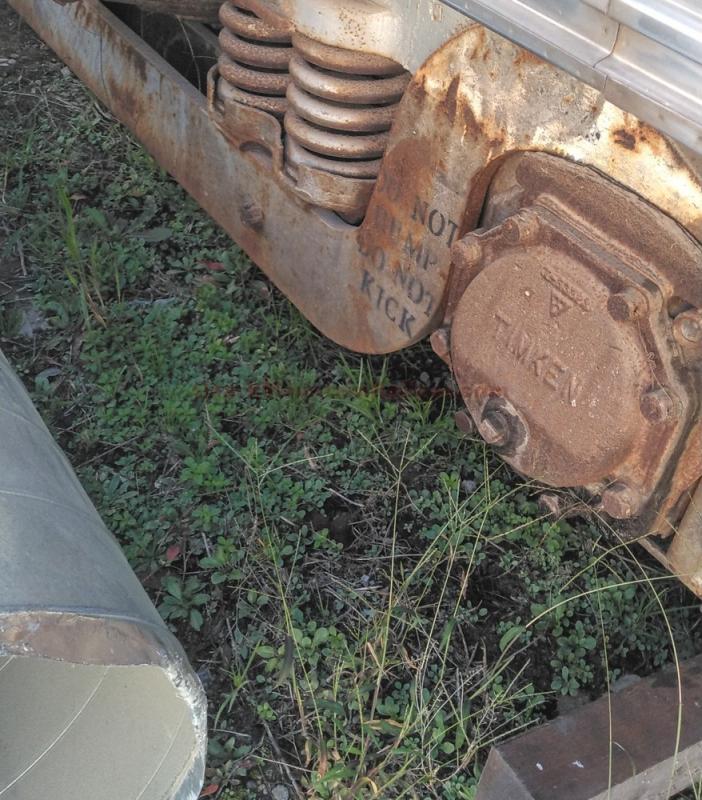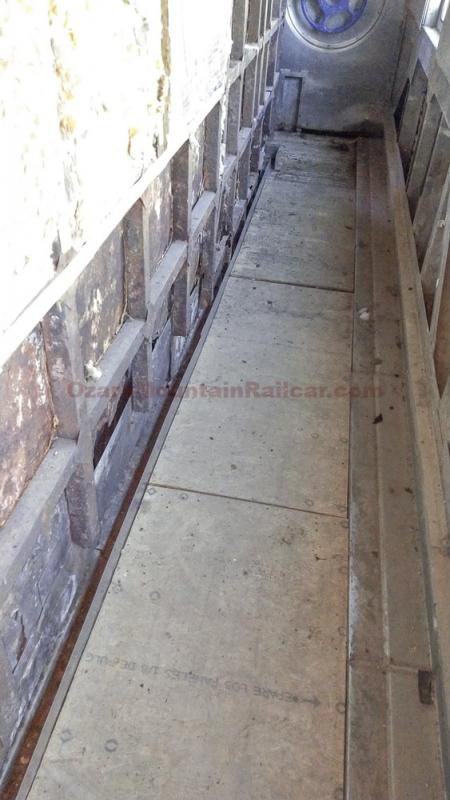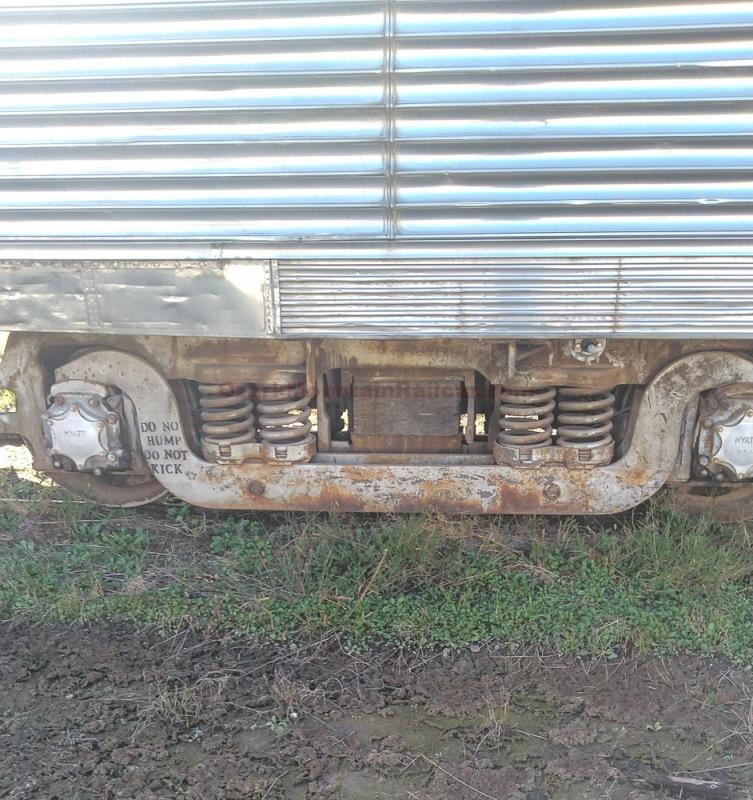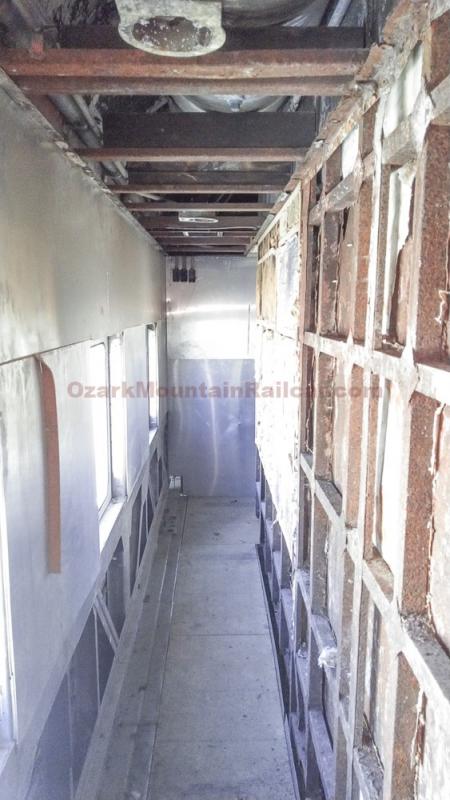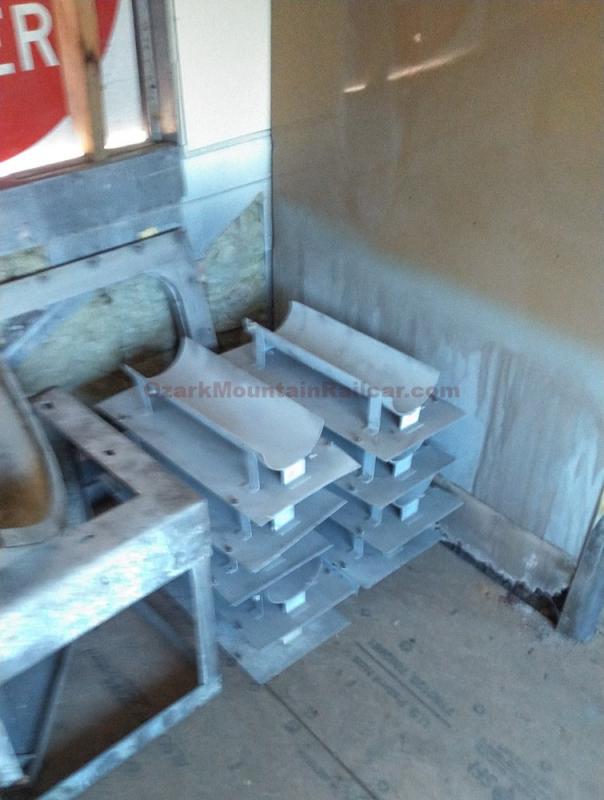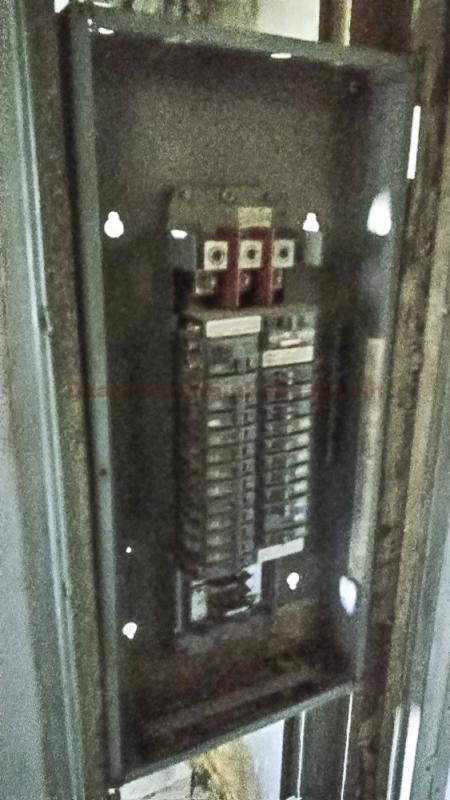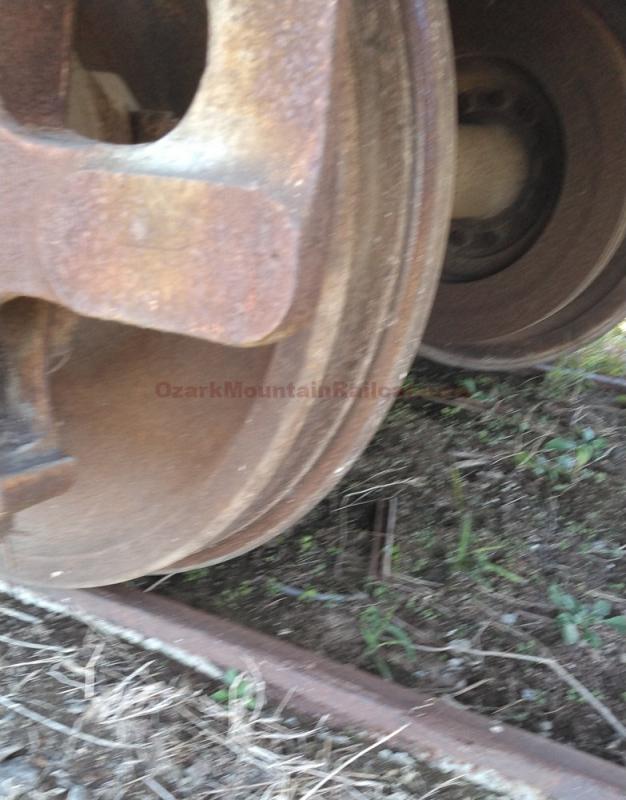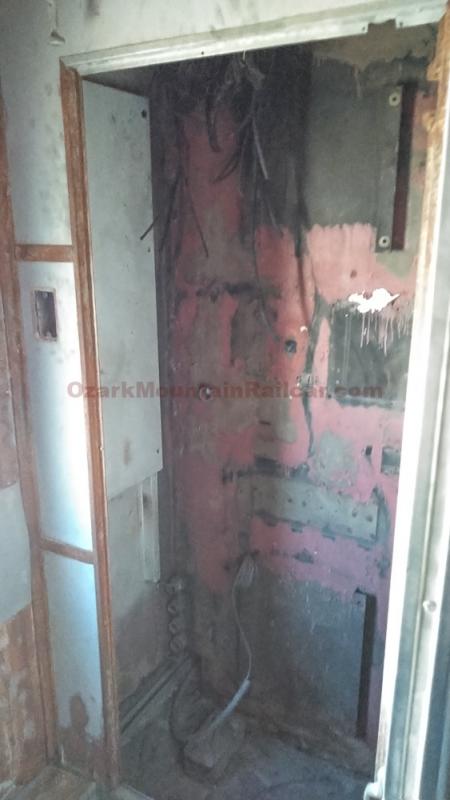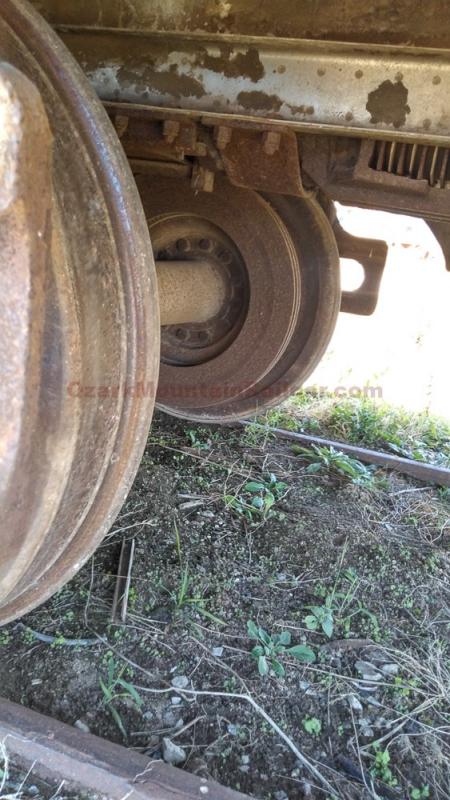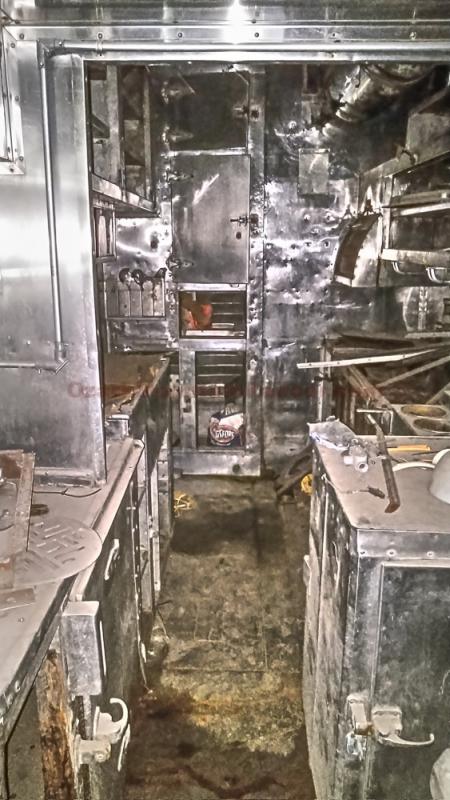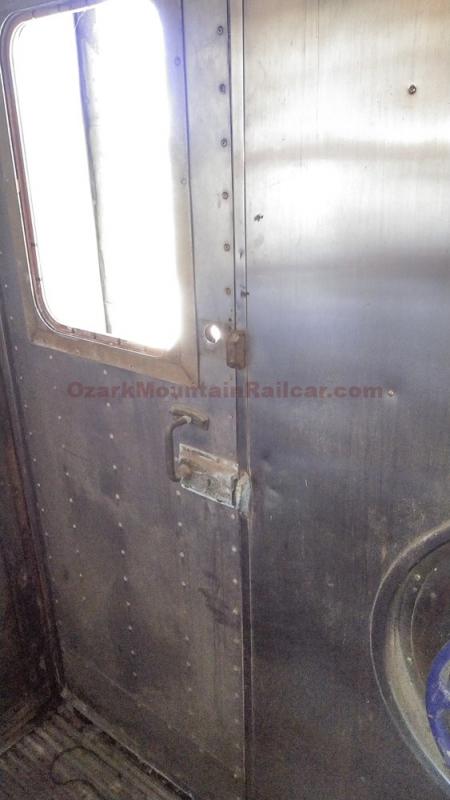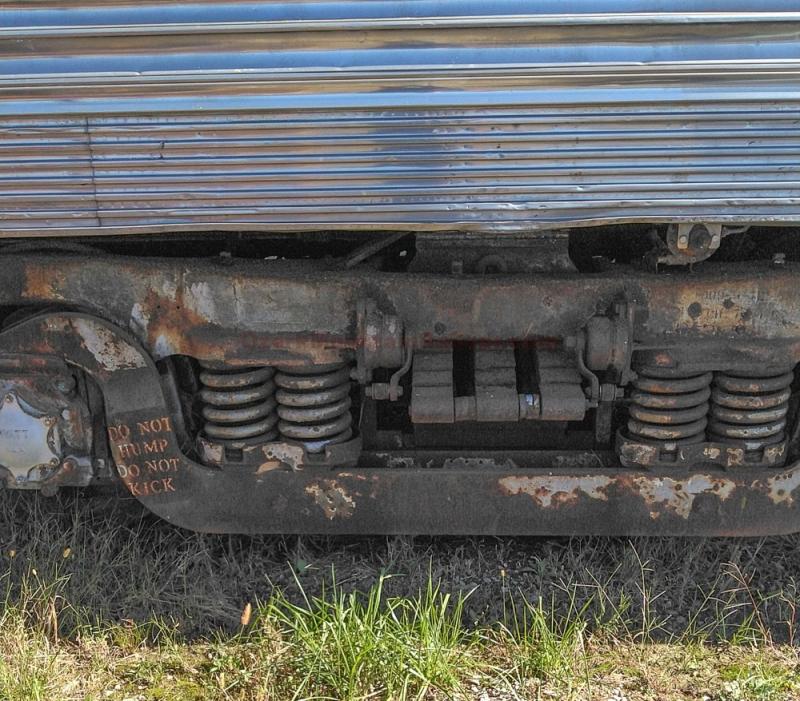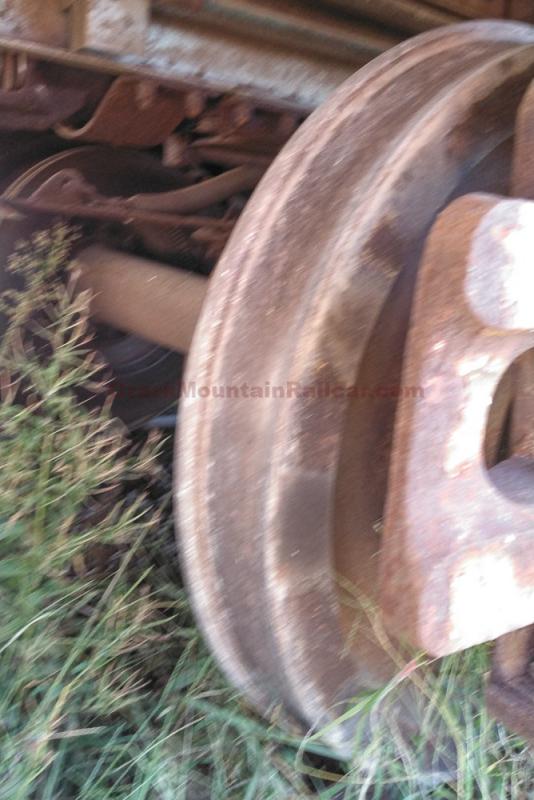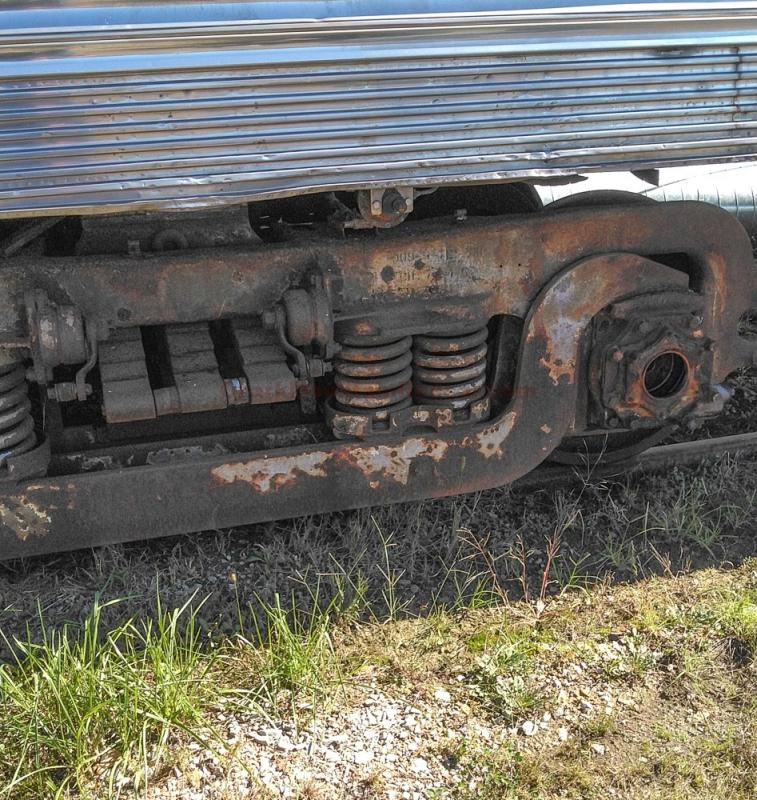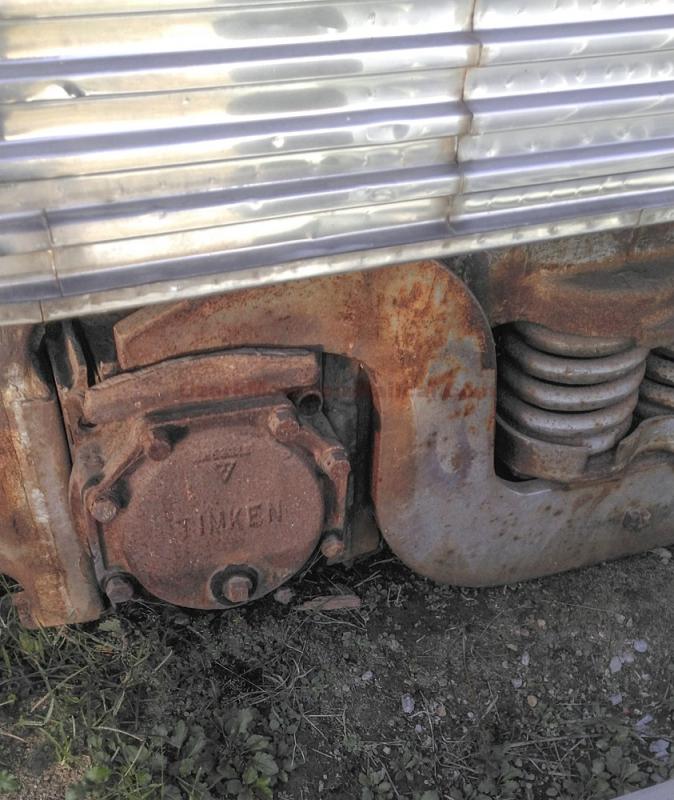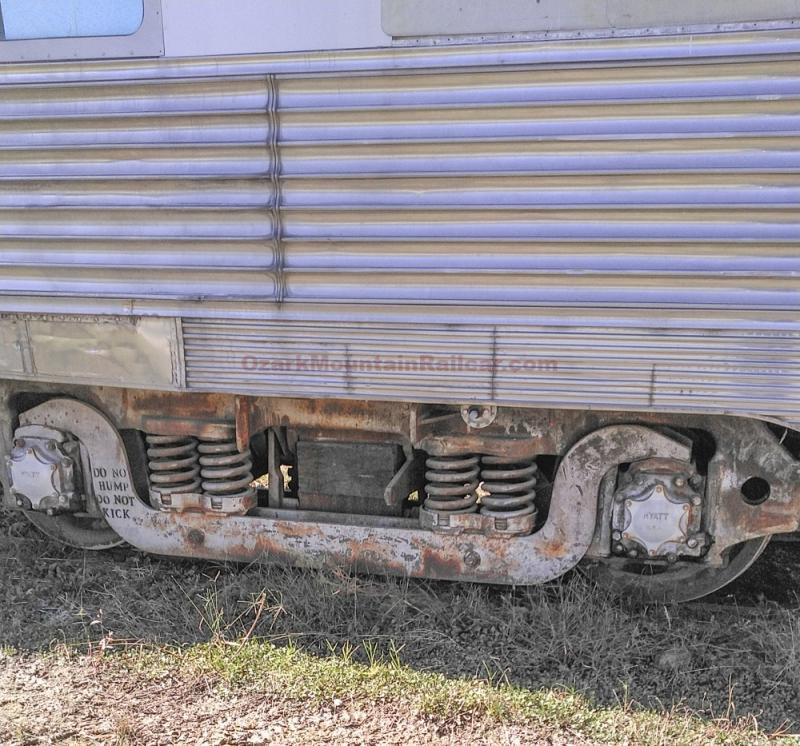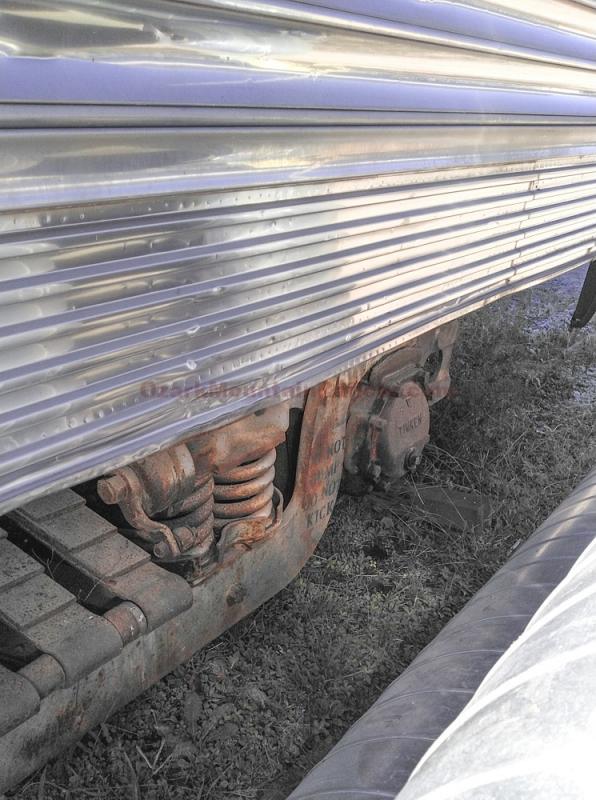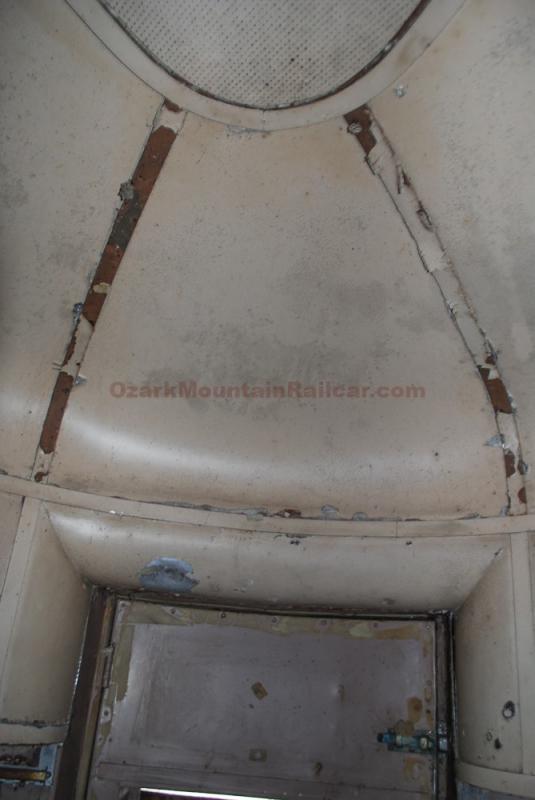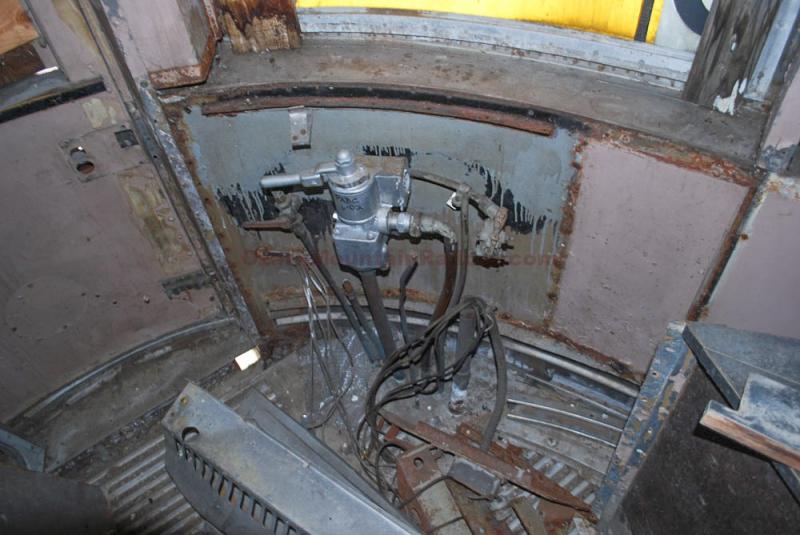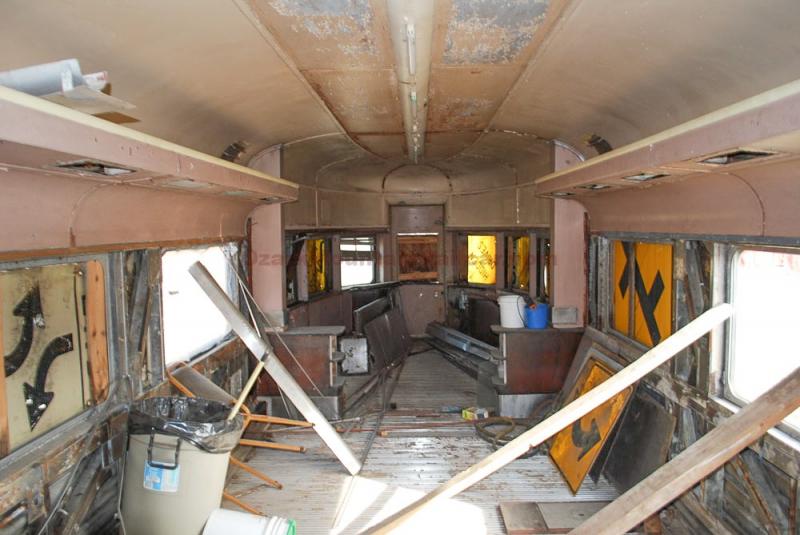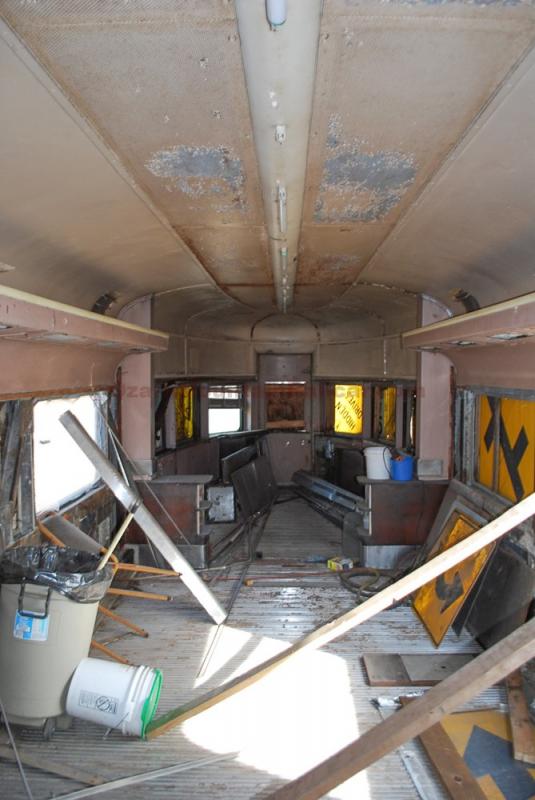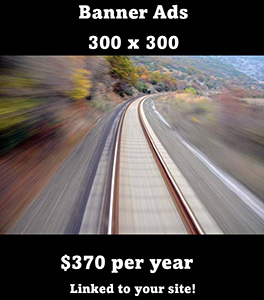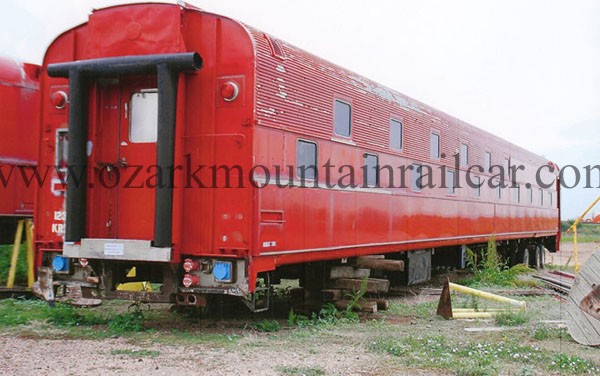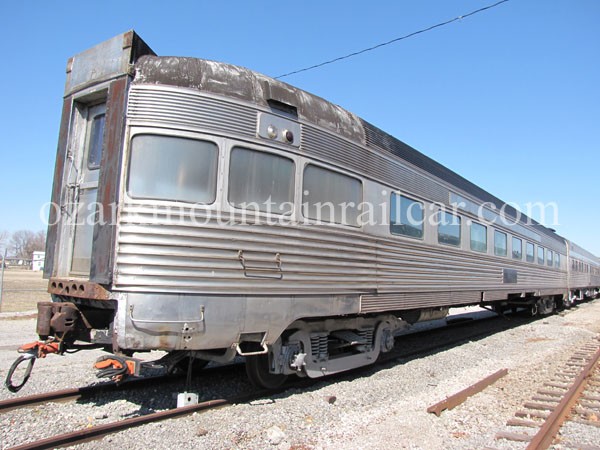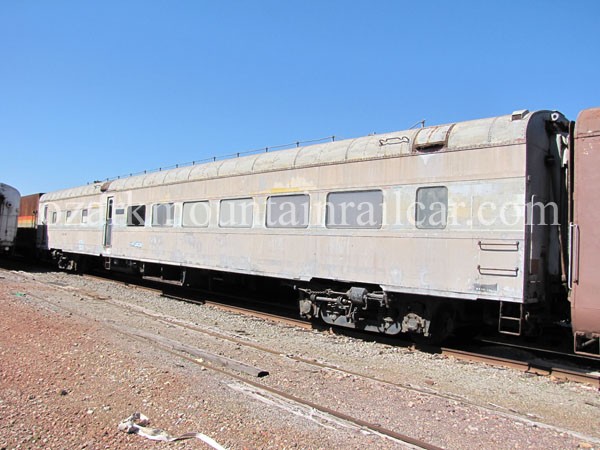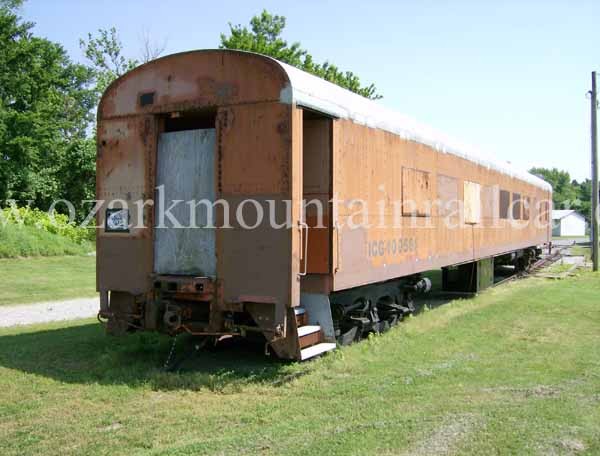Built in 1940 by the Budd Co for the Chicago, Burlington & Quincy Railroad as a diner, lounge/observation car. Originally built for pool service, Silver Fountain operated as a protect car on such trains as the General Pershing Zephyr, Ak-sar-ben Zephyr and Advance Flyer. This is a very unique car in that is has a center vestibule and is basically like having two cars in one. The dining end of the car has a small kitchen capable of full meal service, next to the kitchen is a 24 seat dining room. The observation end of the car has two restrooms and a spacious 22 seat lounge. Retired by CB&Q in the late 1960's the car was shopped and stored serviceable. Part of the shopping included the replacement of three wheel sets (which are like new) and they turned the fourth wheel set. The car was leased to Quaker Oats who used it as a party room at their plant in St. Joseph, MO, the car was withdrawn from lease and offered for sale in 1973 and sold into private ownership. Silver Fountain has never been owned by Amtrak like most cars of this vintage and has very little wear and tear on the actual car structure. Some of the mechanical details include: Full stainless steel construction, oil roller bearings, H couplers (both ends), C-frame disc brakes, full stainless steel skirt, 6 ice cooled refrigerators, all windows frames are included with car, back up air brake stand, good body, good trucks. The car has had the following upgrades: NEW sub floor, NEW window gaskets, NEW 1/4" Marguard, NEW Window Band, Some NEW Exane wiring. Lead paint has been remove, dining room has been primed and painted. Silver Fountain will need A/C work, some truck work and will need to have a new brake system installed. Silver Fountain would perfect mate to run with a sleeper in Amtrak charter service or it would make that perfect addition to any dinner train. This is a great core car with tons of character!
Q-How much does it cost to ship a passenger car by truck?
A- The costs involved with shipping a passenger car will vary a bit depending on the type of car and the equipment the service provider has and of course the distance it must travel. Normally a passenger car will weigh between 60-85 ton, will be approx. 85' long, ten feet wide and approx. 13-15' high sitting on it's trucks (wheel assemblies). The safest method of shipping will be to lift the car off it's trucks and set one end of the car on the back of a semi truck and the other end of the car on a set of road dollies. So basically the car would be pulled down the highway like a trailer. The trucking company will need to make a second trip to pick up the trucks and deliver them to the site before the truck arrives with the car body. It is recommended that the car be set on a short piece of track since that is how the car structure was designed. You normally can find used railroad ties at landscaping companies and for rail we suggest contacting a local railroad museum, shortline railroad or scrap yard. On an average you can expect to spend a minimum of $10,000-$15,000+. The total price will depend on the trucking company and crane companies in the area. Shipping is the responsibility of the buyer and we are more than happy to discuss the project with any service provider so that fully understand the process.
Q-How much does it cost to ship a passenger car by railroad flat car?
A- Occasionally a passenger car can't be shipped by rail due to it's physical attributes or shipping by truck is not the best option. You can ship a car loaded on a flat car, it will need to be secured to the flat car per American Association of Railroads tie down specifications. The tariff often can be cheaper than moving a car on it's own wheels, but you will still need to pay crane costs at origin and destination and you will need to have an active siding for the car to be delivered to. Shipping by flatcar will start at approximately $10,000 and will be based on origin and destination crane cost and the rail tariff and any car rental costs.
